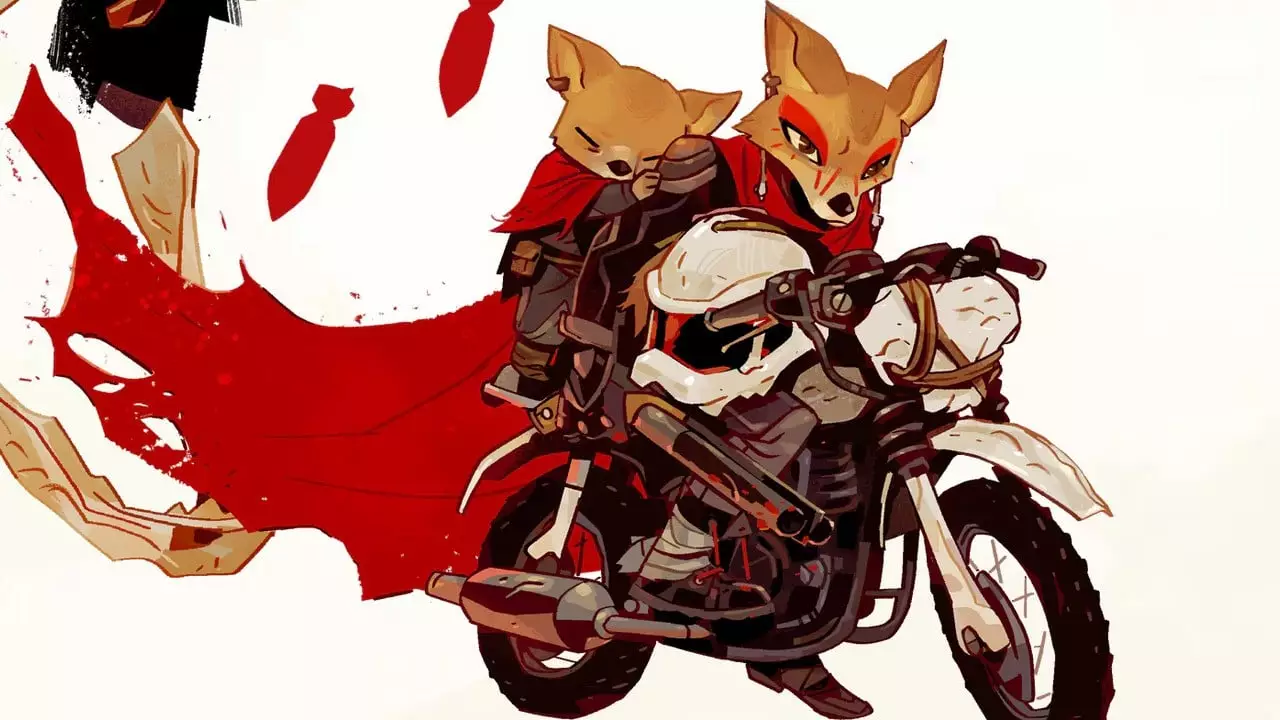In an era where the gaming landscape is saturated with Metroidvania titles, Laika: Aged Through Blood emerges as a significant outlier that redefines expectations. Instead of adhering to the traditional formula that many other recent releases still cling to, this game dares to innovate. While ambitious titles like Animal Well attempt to carve out their own identities amongst generic conventions, Laika completely dismantles the established rulebook, setting a new standard for creativity within the genre.
The core of Laika’s distinctiveness lies in its traversal mechanics. Unlike the familiar segmented rooms and narrow hallways that populate typical Metroidvanias, Laika features expansive, interconnected environments designed for high-speed exploration. Players are motivated to traverse these landscapes on a motorcycle, presenting a crossover appeal to both motocross enthusiasts and traditional action-adventure gamers. The ability to maneuver at breakneck speeds, perform aerial flips, and string together daring stunts stands in stark contrast to the often slow-paced exploration associated with the genre. There’s a palpable thrill in navigating these expansive terrains, as the game’s design constantly challenges players to maintain a high level of awareness, blending adrenaline-pumping gameplay with intricate level design.
As players race through these expansive terrains, they find themselves not only contemplating their bike control but also strategizing around the AI-controlled ‘Bird’ soldiers that inhabit the world. The omnipresent threat of these enemies ensures that players remain engaged, as the stakes are continuously raised in a game that embraces influences from post-apocalyptic narratives akin to Mad Max. The titular character, Laika, serves not only as the protagonist but also as a mother, tasked with balancing the brutal realities of survival against her responsibilities toward her daughter, Puppy.
The visual presentation of Laika: Aged Through Blood juxtaposes its candy-colored aesthetic with dark and gruesome thematic elements. The art design intricately captures a whimsical yet dystopian world filled with anthropomorphic animals, but players are swiftly reminded that behind its colorful veneer lies a narrative steeped in violence and loss. The game does not shy away from portraying mature themes, which are startlingly at odds with its charming character designs. Audiences shouldn’t be misled—this title isn’t intended for younger players.
Accompanying the striking visuals is an outstanding soundtrack by composer Beatriz “Beícoli” Ruiz-Castillo, which elevates the gameplay experience significantly. The soundtrack, heralded as one of the best in recent memory, features vocal tracks that complement the game’s dramatic moments, wrapping players in an emotive sonorous experience that reverberates through the often lonely and bleak landscapes.
At first glance, Laika’s combat mechanics may evoke discomfort for those accustomed to traditional Metroidvanias. The initial simplicity of the gunplay—where players wield a basic handgun—belies the deeper intricacies that emerge as they progress. Each encounter demands that players cleverly utilize their mobility; acrobatic maneuvers are not mere embellishments, but critical to gameplay success. Relative to the fast-paced nature of encounters, players may need to flip backward to reload or forward to deflect incoming projectiles, transforming movement into a vital aspect of combat strategy.
The necessity of maintaining agility while firing creates a rhythm that encourages creativity. Players have the option to bypass many of the game’s confrontations, but engaging with enemies becomes increasingly rewarding; visceral remnants from defeated foes serve as currency, allowing for versatile weapon upgrades that further enhance gameplay depth. This constant tension between evasion and aggression propels the game forward and compels players to refine their skills.
Despite its many strengths, Laika: Aged Through Blood does not lack its challenges, especially in terms of difficulty and technical execution. The immediate penalty of death in combat can feel punishing, particularly for those unaccustomed to the mechanics, yet the inclusion of ample checkpoints alleviates potential frustration. While most encounters happen seamlessly, transitioning between different areas can occasionally lead to performance issues, such as frame rate drops or camera glitches. While these hiccups do not ruin the overall experience, they serve as a reminder of the imperfections remain.
Laika: Aged Through Blood sets a new precedent within the Metroidvania genre, offering a distinctive blend of high-octane traversal, engrossing combat, and compelling narrative themes. Its innovative mechanics combined with a remarkable soundtrack place it on a pedestal alongside contemporary classics. If the performance issues are polished, there’s no doubt that Laika could very well inscribe itself as a candidate for game of the year in future accolades.


Leave a Reply